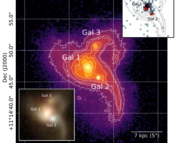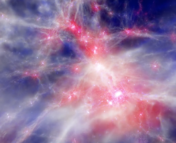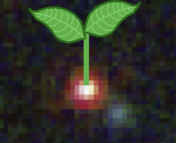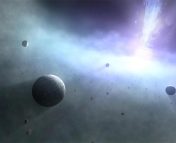Title: Massive Black Hole Seeds
Authors: John A. Regan and Marta Volonteri
First Author’s Institution: Centre for Astrophysics and Space Science Maynooth, Department of Physics, Maynooth University, Ireland
Status: Submitted to the Open Journal of Astrophysics
Massive black holes (MBH) are found at the center of most galaxies, but their origin story remains a mystery. Recent James Webb Space Telescope (JWST) observations made headlines for discovering Active Galactic Nuclei (AGN), which are luminous BHs that accrete matter, with a mass of up to a billion solar masses just 700 million years after the Big Bang. This suggests that the “seed” black holes (BHs) that grew into the garden of massive black holes we see today in galactic centers formed early in the universe. However, the question of how they formed remains unresolved.
Current models are based on one of two types of BH seeds: “light” or “heavy”. A light seed is any seed BH with a mass of less than 1000 solar masses, while a heavy seed starts with a mass of over 1000 solar masses. The key challenge in understanding the seed population in the early universe is identifying their formation and growth channels. The simplest case of a light seed assumes all of the BHs originate from the remnants of the first stars in the universe, but it is hard to explain their growth into MBHs with masses over 100,000 solar masses with just accretion. Alternatively, heavy seeds are thought to be formed through several mechanisms including a direct collapse of massive gas clouds resulting in the formation of a supermassive star. Such heavy seeds could explain the over-massive BHs we see in the early universe, but the conditions favoring their existence in the early universe are much rarer than the light seeds.
In today’s paper, the authors discuss the various pathways of light and heavy seed formation. They quantify the rarity (number density) of different seed masses in the early universe and discuss the importance of the environment in the growth of the seed BHs with the help of models of dark matter haloes that form light and heavy seeds.
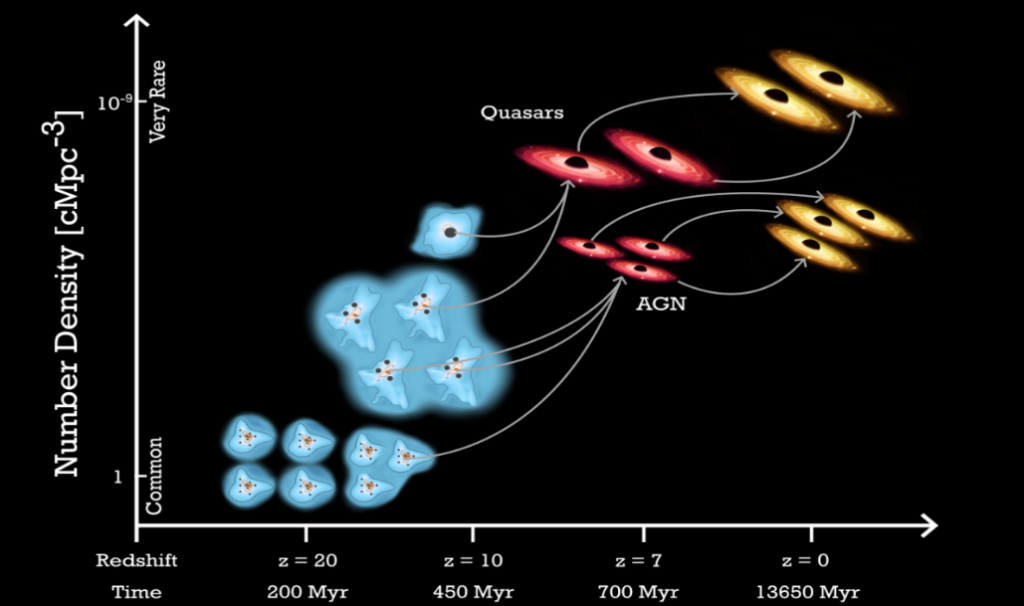
What are the types of seeds and where are they planted?
The authors select three different haloes to show how environmental conditions affect various MBH formation channels. The first two halo models describe heavy seed formation through direct collapse and dynamical pathways. The third halo has light seeds forming from the remnants of the first stars, also known as population III stars.
In the early universe, molecular hydrogen acts as a coolant, helping to fragment gas to form the first stars. However, the early universe has background radiation consisting of Lyman-Werner (LW) photons that can suppress molecular hydrogen formation. The heavy seed in the first model halo assumes a very strong LW background resulting in a direct collapse of the gas cloud. Such haloes with a very intense LW field are very rarely found in cosmological simulations and hence cannot solely explain the MBH population we see at high redshift.
Other heavy seed formation channels include collisions of stars in young star clusters and hierarchical BH mergers within a star cluster. Such dynamical pathways to heavy seeds can generate a spectrum of seed masses. In the second halo model considered in this paper, the authors find seed BHs up to 10,000 solar masses, generated through such dynamical channels. The formation of these seeds is 100,000 times more likely than heavy seeds produced via direct collapse and are therefore more likely to explain the overall MBH population.
Light seeds are much more common compared to heavy seeds. However, they are spread around inhomogeneously in the halo center, where the gas density is insufficient for them to grow via accretion into MBHs. Think of gas as the water needed for the growth of the “seeds”. If the light seeds are born away from the halo center where there is less available gas, it can lead to starvation. Heavy seeds, on the other hand, can sink into the galactic center where the gas densities are highest and grow efficiently via accretion.
Although light seeds are scattered around the halo, there are gas-rich regions where their growth is efficient. They could grow through efficient accretion when they are embedded in a star cluster or gas clumps. The light seeds could also be brought to a gas-rich region via a galaxy merger. If the light seeds in these environments can grow efficiently into the masses of the heavy seeds and are 1000-10,000 more abundant, then they become an equally likely candidate to explain the MBHs.
Looking ahead
The authors emphasize that rather than viewing seed masses as either light or heavy, it is important to recognize that seed masses exist on a continuum. Current state-of-the-art cosmological simulations are getting better at probing light and heavy seed formation and growth. The goal of the next generation of simulations is to push the resolution limit to examine the regime of light seeds more carefully. This will allow us to put tighter constraints on the number density of various seed BH and their growth channels.
There are observational challenges too. The JWST observations of the luminous AGNs at high redshifts need further in-depth analysis. They show a lack of X-ray emission, which could mean that their masses are overestimated. Nevertheless, these observations at wavelengths previously inaccessible by astronomers have opened new windows to test our theoretical seed models. In the coming decade, gravitational wave observatories like LISA and ET will be able to peek at the MBH mergers in the early universe and provide us further insight into their growth.
Astrobite edited by Alexandra Masegian
Featured image credit: Pranav Satheesh and Figure 1 from the paper.

